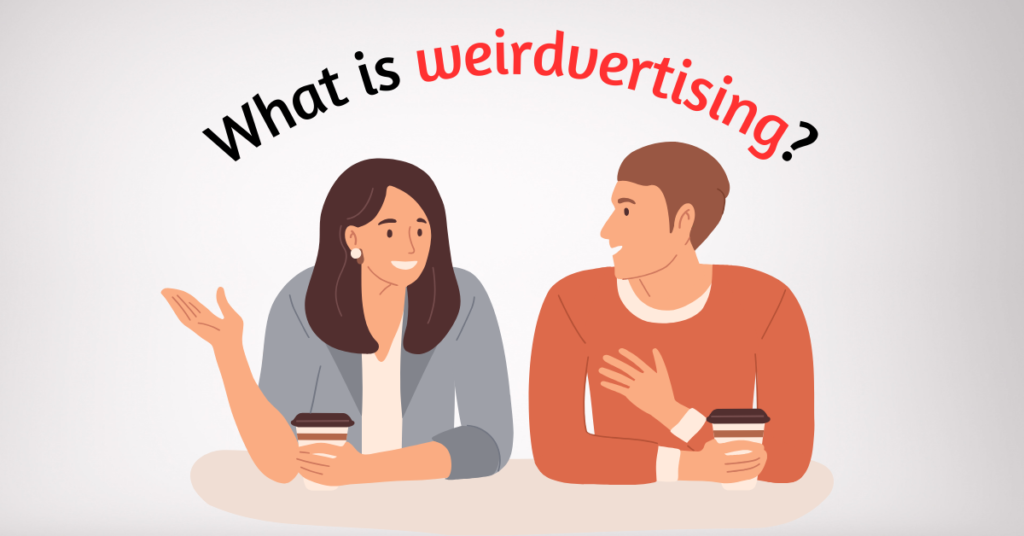It refers to any ad that probably shouldn’t work but does, by highlighting its intentionally lower quality or causing confusion.
Why do they stand out?
The ads abandon some basic design and advertising principles in exchange for gaining attention.
What are their features?
- Doesn’t follow basic design principles of contrast, balance, and unity,
- Features unpopular fonts like Comic Sans and inconsistent typefaces,
- May include nostalgic media like Clip Art and WordArt, and
- Appears self-aware of its supposed faux pas.
Why does it work?
- The ads feature basic brand info, and they’re true to brand identity.
- They are relatable and are often nostalgic through the use of vintage tools like Clip Art and WordArt.
- And, they can be funny, attention-grabbing, and recognizable.
Is it right for every brand?
They are a good choice for the right brand—so long as it is skewed toward a younger audience, is accessible, and works with creatives who are plugged into greater cultural trends and conversations.
What brands are using it?
- Surreal’s Billboards
- MoonPie’s Alien Ads
- Duolingo’s Mascot
- Scrub Daddy’s Video Ads
Where can I learn more?
Insider Intelligence posted an article you might want to read.

